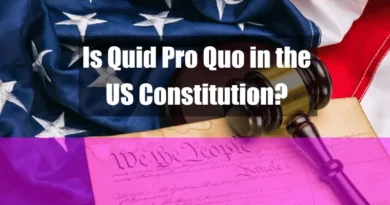I. Introduction
Racial quid pro quo harassment occurs when an individual in a position of power conditions employment benefits or opportunities on the recipient’s adherence to racially discriminatory demands. This form of harassment is a stark manifestation of racial discrimination, exploiting power imbalances to perpetuate racial inequities in the workplace.
II. Distinguishing Racial Quid Pro Quo Harassment from Other Forms of Discrimination
Racial quid pro quo harassment is distinct from other forms of racial discrimination, such as hostile work environment harassment. While both forms involve racial prejudice, quid pro quo harassment entails a specific exchange of benefits or opportunities for racial compliance. This creates a coercive environment where individuals are forced to choose between their racial identity and their professional advancement.
III. The Prevalence and Impact of Racial Quid Pro Quo Harassment
While there isn’t extensive data specifically on “racial quid pro quo harassment,” studies show racial harassment in workplaces is prevalent. A 2021 report by the Equal Employment Opportunity Commission (EEOC) found that racial harassment continues to be a significant problem, with the EEOC receiving over 23,000 complaints in 2020, suggesting racial quid pro quo harassment, a specific form of racial harassment, is also likely underreported.
Racial quid pro quo harassment, despite its severity, remains underreported and underrecognized. Victims often fear retaliation, public scrutiny, or damage to their professional reputation. The consequences of this harassment can be devastating, leading to emotional distress, career setbacks, and a sense of powerlessness.
IV. Understanding Racial Quid Pro Quo Harassment
A. The Power Dynamics at Play
Racial quid pro quo harassment thrives in situations where power dynamics are unequal. Individuals in positions of authority, such as supervisors or managers, may exploit their power to coerce or pressure employees of color into accepting racially discriminatory conditions. This abuse of power creates an atmosphere of fear and intimidation, silencing victims and perpetuating racial disparities in the workplace.
B. Subtle and Overt Forms of Racial Quid Pro Quo Harassment
Racial quid pro quo harassment can manifest in both subtle and overt forms. Subtle forms may involve veiled threats, indirect pressure, or the creation of a hostile work environment that disproportionately affects employees of color. Overt forms, on the other hand, involve explicit demands for racial conformity, such as requiring employees to adhere to racially stereotypical practices or engage in racially discriminatory behavior.
C. Examples of Racial Quid Pro Quo Harassment in Various Settings
Racial quid pro quo harassment can occur in various workplace settings, including:
- Employment: A supervisor may condition a promotion or favorable work assignment on an employee’s willingness to engage in racially discriminatory behavior.
- Education: A professor may offer better grades or preferential treatment to students who conform to racial stereotypes or engage in racially biased activities.
- Housing: A landlord may withhold housing opportunities or subject tenants of color to unfair treatment based on race.
Check out Fair Housing Act (FHA) of 1968.
V. Legal Framework for Addressing Racial Quid Pro Quo Harassment

A. Title VII of the Civil Rights Act of 1964
Title VII of the Civil Rights Act of 1964 safeguards employees from unfair workplace treatment based on race, color, religion, sex, or national origin. This protection extends to safeguarding employees from racial quid pro quo harassment, where an employer makes employment decisions contingent upon an employee’s compliance with racial demands. Individuals who have experienced racial quid pro quo harassment can seek recourse through the Equal Employment Opportunity Commission (EEOC) or by pursuing legal action in court.
B. Title IX of the Education Amendments of 1972
While Title IX primarily prohibits discrimination based on sex, it also has implications for racial harassment in educational settings. Title IX regulations define sexual harassment to include unwelcome conduct of a sexual nature that is “so severe, pervasive, and objectively offensive that it effectively denies participation in any educational program or activity.” This definition can encompass situations where racial harassment creates a hostile environment that interferes with a student’s education.
However, racial quid pro quo harassment, where a benefit is conditioned on racial compliance, wouldn’t directly fall under Title IX. Schools receiving federal funding are still obligated to address racial discrimination under other federal laws, such as Title VI of the Civil Rights Act of 1964, which prohibits discrimination based on race, color, or national origin in any program or activity receiving federal financial assistance. Many educational institutions also have their own non-discrimination policies that encompass racial harassment.
C. State and Local Laws Prohibiting Racial Discrimination
Many states and localities have enacted laws prohibiting racial quid pro quo harassment. These laws may provide additional protections for victims and offer alternative avenues for redress.
D. Enforcing Legal Protections against Racial Quid Pro Quo Harassment

Enforcing legal protections against racial quid pro quo harassment requires individual action and employer accountability. Victims should be aware of their rights and have access to resources for reporting and pursuing legal action. Employers must implement effective anti-discrimination policies, provide comprehensive training, and promptly address complaints of racial quid pro quo harassment.
VI. Proving Racial Quid Pro Quo Harassment
A. Establishing the Elements of a Racial Quid Pro Quo Harassment Claim
To establish a racial quid pro quo harassment claim, the plaintiff must demonstrate that:
The employer engaged in a quid pro quo arrangement: The plaintiff must show that the employer offered or threatened to take adverse employment action against them in exchange for their compliance with racial demands. This could include denying promotions, pay raises, or other benefits or subjecting the plaintiff to negative treatment, such as unfair criticism or disciplinary action.
The racial demands were unwelcome: The plaintiff must show they did not welcome or consent to the employer’s racial demands. This means that they must have communicated their rejection of the demands or that the circumstances would have made it clear to a reasonable person that the demands were unwelcome.
The employer’s racial demands were a motivating factor in the adverse employment action: The plaintiff must show that the employer’s racial demands were a substantial factor in the adverse employment action they suffered. This means that the demands must have played a significant role in the employer’s decision to take the adverse action.
The employer knew or should have known that the racial demands would create a hostile work environment: The plaintiff must show that the employer knew or should have known that the racial demands would create a hostile work environment for employees of their race. This means that the demands must have been severe or pervasive enough to offend a reasonable person of the plaintiff’s race objectively.
B. Gathering Evidence to Support a Claim
Several types of evidence can be used to support a racial quid pro quo harassment claim. These include:
- Direct evidence: This is evidence that directly proves the existence of the alleged harassment. For example, this could include a memo from the employer to the plaintiff stating that promotion is contingent on the plaintiff’s acceptance of a racial demand.
- Circumstantial evidence: This is evidence that does not directly prove the existence of the alleged harassment but that can be used to infer its existence. For example, this could include evidence of a pattern of discriminatory behavior by the employer or evidence that the plaintiff was subjected to racial slurs or jokes in the workplace.
- Witness testimony: This is testimony from other employees or witnesses who can corroborate the plaintiff’s harassment allegations.
- Documentary evidence: This can include emails, letters, memos, or other documents that support the plaintiff’s allegations of harassment.
C. Overcoming Common Challenges in Proving Racial Quid Pro Quo Harassment

One of the most common challenges in proving racial quid pro quo harassment is that the harassment is often subtle and may not be explicitly stated. This can make it difficult for the plaintiff to gather evidence to support their claim.
Another challenge is that employers often deny that the harassment occurred. This can make it difficult for the plaintiff to prove their case, especially if there are no witnesses to corroborate their allegations.
Despite these challenges, it is important to note that racial quid pro quo harassment is a serious form of discrimination that is prohibited by law. If you believe that you have been subjected to racial quid pro quo harassment, you should consult with an attorney to discuss your legal options.
VII. Preventing Racial Quid Pro Quo Harassment
Preventing racial quid pro quo harassment requires a comprehensive approach that involves employer policies, training, and a workplace culture that promotes respect and inclusion. Here are some key steps employers can take:
A. Employer Policies and Training on Racial Discrimination:
- Develop and implement clear and comprehensive policies prohibiting racial discrimination and harassment, including quid pro quo harassment.
- Provide regular training to all employees on racial discrimination and harassment, including recognizing, preventing, and reporting it.
- Train managers and supervisors on identifying and addressing potential racial discrimination and harassment in the workplace.
B. Creating a Workplace Culture of Respect and Inclusion:
- Foster a workplace culture that values diversity, equity, and inclusion (DEI).
- Encourage open communication and create a safe space for employees to report concerns about discrimination or harassment.
- Hold employees accountable for their actions and take disciplinary action against those who engage in discriminatory behavior.
VIII. Encouraging Reporting and Addressing Complaints Promptly and Effectively:
- Establish clear and accessible reporting procedures for employees to report discrimination or harassment.
- Ensure that all complaints are promptly and thoroughly investigated.
- Take appropriate corrective action to address any substantiated complaints, including supporting the victim and disciplining the perpetrator.
IX. Remedies for Racial Quid Pro Quo Harassment

Victims of racial quid pro quo harassment may be entitled to several remedies, including:
- Compensatory damages for emotional distress and other harm: This includes damages for pain and suffering, mental anguish, loss of enjoyment of life, and other emotional harm caused by the harassment.
- Punitive damages to deter future misconduct: This type of damages is intended to punish the employer for its egregious or reckless conduct and to deter future harassment.
- Injunctive relief to prevent further harassment: This includes an order requiring the employer to take steps to prevent future harassment, such as reinstating the victim to their job, removing the perpetrator from the workplace, or providing additional training to employees.
X. Conclusion
Racial quid pro quo harassment is a serious form of discrimination that can have a devastating impact on victims. Employers have a legal and moral obligation to prevent and address this harassment. We can promote racial equality and justice in the workplace by implementing comprehensive prevention strategies and providing effective remedies.
XI. FAQs
A. How can I tell if I am being subjected to racial quid pro quo harassment?
There are several signs that you may be being subjected to racial quid pro quo harassment. These include:
- Your employer has made unwelcome racial demands of you, such as requesting sexual favors in exchange for a promotion or other job benefits.
- You have been subjected to negative treatment or disciplinary action after refusing to comply with racial demands.
- You feel that your work environment is hostile and intimidating due to racial harassment.
If you are experiencing any of these signs, it is important to document the harassment and report it to your employer or an appropriate authority.
B. What are the consequences of racial quid pro quo harassment for employers?
Employers that engage in racial quid pro quo harassment can face serious consequences, including:
- Payment of compensatory and punitive damages to the victim of the harassment
- Reinstatement of the victim to their job
- Back pay and benefits
- Injunctive relief to prevent future harassment
- Attorney’s fees
In addition, employers that engage in racial quid pro quo harassment may also face reputational damage and loss of business.









